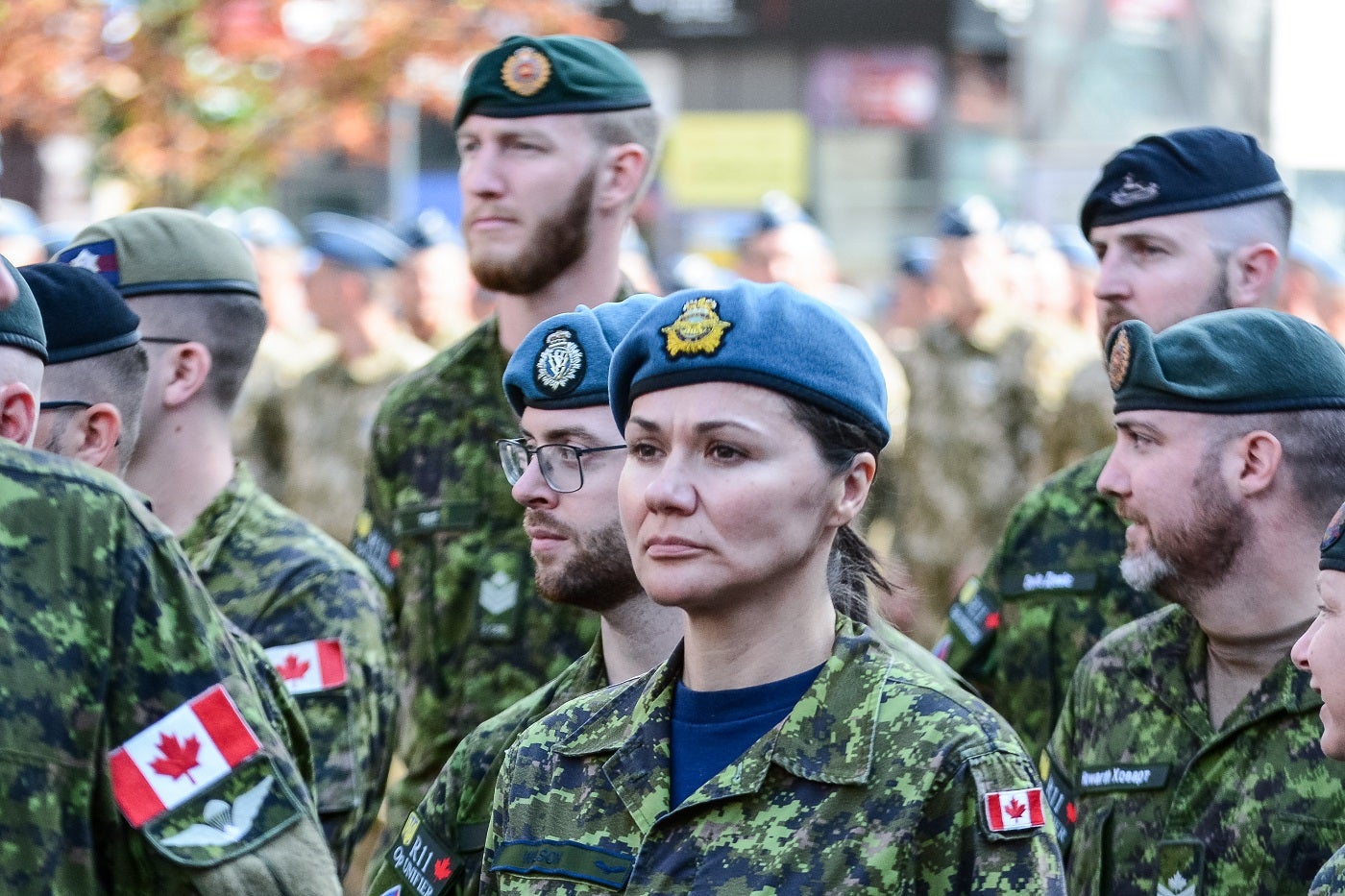
In response to mounting global uncertainties and rising geopolitical tensions, Canada’s Armed Forces are poised to receive financial boosts for modernisation and expansion.
Canada’s commitment to international security and its evolving role on the world stage has prompted increases in the defence budget for the Canadian Army, Royal Canadian Navy and Royal Canadian Air Force. GlobalData’s report, Canada Defense Market 2023–2028, forecasts growth of $2.4bn ($3.32bn) from 2024 to 2028, reflecting a steady compound annual growth rate (CAGR) of 2.7% during this period.
How well do you really know your competitors?
Access the most comprehensive Company Profiles on the market, powered by GlobalData. Save hours of research. Gain competitive edge.

Thank you!
Your download email will arrive shortly
Not ready to buy yet? Download a free sample
We are confident about the unique quality of our Company Profiles. However, we want you to make the most beneficial decision for your business, so we offer a free sample that you can download by submitting the below form
By GlobalDataThis surge continues Canada’s historical trend, where the defence budget saw a more substantial CAGR of 4.5% from 2019 to 2023, marking a $3.3bn increase.
The growth drivers
The surge in defence spending can be attributed to several key factors. One primary driver is the resurgence of Russia on the global stage, notably marked by its 2022 invasion of Ukraine.
This international event, coupled with ongoing modernisation within the Canadian Armed Forces and the need to support operational deployments worldwide, has contributed to the budget expansion.
Defence market size
Over the past few years, Canada has increased its defence expenditure from $17.2bn in 2019 to $20.6bn in 2023, showcasing a CAGR of 4.5% during the 2019–23 period.
Although facing a brief contraction in 2020–21 due to political and economic uncertainties, Canada has reaffirmed its commitment to a robust defence strategy, further solidified by shifting global dynamics. The defence budget is projected to grow at a CAGR of 2.7% from 2024 to 2028.
The increase in defence spending primarily supports projects within the Air Force and Navy, including procuring 88 F-35A stealth fighter jets and constructing 15 frigates.
Key drivers of defence expenditure
Canada’s tense relationship with Russia has roots in Russia’s actions, such as the annexation of Crimea in 2014 and the 2022 invasion of Ukraine. As a strong supporter of Ukraine, Canada has provided military training and equipment to bolster Ukraine’s defences.
Beyond Ukraine, Canada maintains concerns regarding security in the Baltic states, leading to deployments of troops in support of Nato allies.
Being an Arctic nation, Canada also keeps a watchful eye on developments in the Arctic region, where Russia has been increasing its military presence. The effects of climate change, opening Arctic routes for trade and resource exploration, further heighten the importance of Arctic security.
Canada’s unique geographic position with both Atlantic and Pacific territories necessitates a dual focus on both regions. The emergence of China in the Indo-Pacific region poses challenges, prompting Canada to join the Inter-Parliamentary Alliance on China and collaborate with China’s neighbours, which share concerns about its expansion.
Tensions have escalated as Canadian military patrol planes encountered harassment by Chinese aircraft off North Korea’s coast in June 2022.
In addition to great power competition, Canada continues to address threats from extremist terrorism. Canadian Special Forces are actively involved in countering terrorist networks, and the nation emphasises counter-radicalisation efforts while cooperating with allies to prevent large-scale attacks.
Recognising the impact of climate change on global security, Canada has adapted its defence strategy accordingly.
The melting ice caps, rising sea levels, extreme weather events and humanitarian crises have driven the need for increased Coast Guard and Navy patrols in the north. The indirect impact of climate change on global instability further influences the defence landscape.
Canada’s defence strategy, aptly named ‘Strong, Secure, Engaged’, is complemented by the Future Force Design initiative aimed at upgrading military platforms, enhancing multi-domain C4ISTAR networks, improving lethality, and embracing unmanned systems and artificial intelligence. Modernising the North American Aerospace Defense Command (NORAD) is among the priorities.
Canada’s defence spending as a percentage of its gross domestic product remains below the Nato target of 2%. The current forecast does not anticipate reaching this goal by 2028, with the defence budget projected to hover around 1.04% of total expenditure. However, the per capita defence budget has grown from $457.8 in 2019 to $522.5 in 2023, with an expected rise to $557 by 2028.
Canada maintains relationships with organisations such as Nato, the Five Eyes alliance, the EU and the US. Its membership of the Arctic Council reflects its dedication to the Arctic region, and the Canada-US alliance is evident through collaborations like NORAD and the Permanent Joint Board of Defense.
Political, social and economic factors
Canada’s political orientation, commitment to multilateral engagement, domestic politics, cultural values, social priorities and economic stability all shape its defence policy. Economic challenges and resource development in the Arctic region also impact Canada’s defence planning.
Canada’s defence landscape is evolving in response to global dynamics and its commitment to maintaining a modern, agile military.








